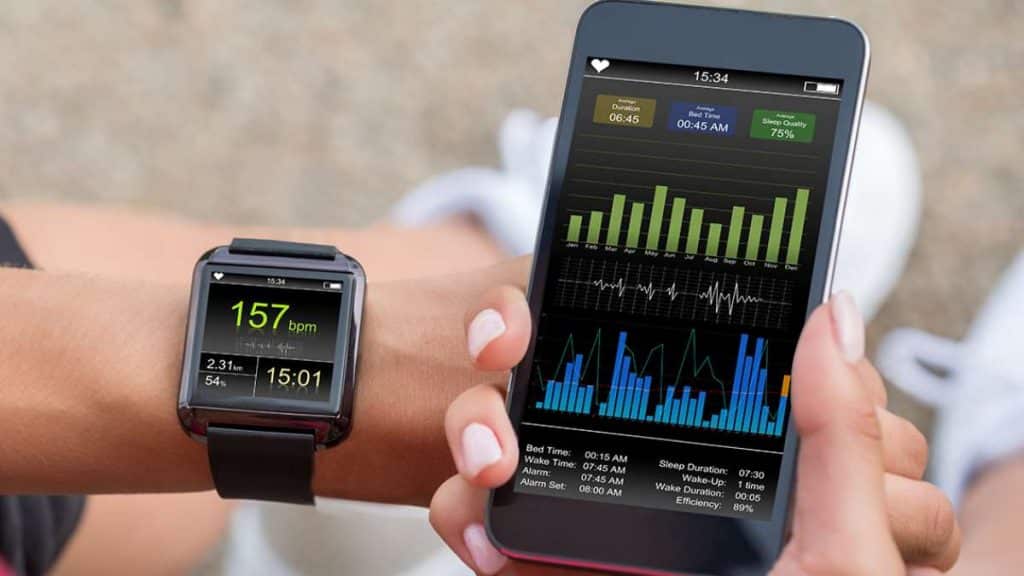Thanks to the Food and Drug Administration and scientific studies, we know that there is no proof that smartphone radiofrequency exposure leads to any health issues. As per the National Cancer Institute, modern mobile devices emit low levels of non-ionizing radiation that only contribute to tissue heating. As far as we knew, keeping our smartphones close to our hearts when we go running like Olympic champs was completely safe. However, what we knew may no longer hold true:
New Danger on the Horizon
A recent FDA study advised patients with pacemakers to keep all electronic devices at a distance from their medical implants. The Heart Rhythm Society’s study from August 2021 has confirmed these findings. Newer smartwatches and smartphones can cause magnetic interference with these devices and disrupt their function.
Implantable cardioverter-defibrillators (ICDs) and pacemakers have a “magnet mode” that activates when the device needs to suspend itself for therapy or a procedure that could possibly cause electromagnetic interference is underway. This mode is part of the cardiovascular electronic implant mechanism that helps hearts with rhythm disorders, including fast or slow beating rates.
The problem is that tiny rare-earth magnets such as neodymium have powerful static magnetic fields that activate the magnet mode of ICDs and pacemakers. These magnets are tiny, and the number of consumer electronic devices which support them is growing by the day.
Study and Results
The latest study put iPhone 12 and an Apple Watch 6 to the test with a unidirectional probe Gaussmeter to evaluate the strength of the magnetic field these devices emit. In general, any magnetic field more potent than 10G can affect how an electronic implant works and potentially put a patient at risk.
The study’s results have shown that rare-earth magnets on newer smartphones and smartwatches have far stronger magnetic fields than the 10G limit, with a radius of up to 11 mm. All iPhone 12 models and an Apple Watch 6 had magnetic field strength well above 10G that caused implants to trigger the magnet mode.
The Heart Rhythm Society agrees with the FDA’s recommendation to keep smartwatches and smartphones at least 6 inches from electronic implants. By doing this, patients will avoid the magnetic interference these devices can create. Further suggestions include avoiding carrying consumer electronic devices in a pocket above a medical device. If patients have a home-monitoring system, they can check the implant’s function. Otherwise, they should contact health care providers if they have any questions or notice any symptoms.
Speaking of symptoms, they can be pretty severe: A pacemaker implant that goes into magnet mode will have frequent paces regardless of the patient’s rhythm. As a result, the patient can experience irregular heartbeats, or a more severe injury. The ICDs won’t be able to administer anti-tachycardia pacing therapy or shocks that can save a patient’s life. Depending on the model, patients might hear an electronic tone once the ICD goes into a magnet mode.
Notifying All Parties
Apple’s website has already notified users to keep their smart devices six inches or more from implanted medical devices. However, a lead FDA investigator, Seth J. Seidman, has said that the FDA is notifying healthcare providers and patients of potential risks. He also believes the number of consumer electronics devices with strong magnets will continue to expand in the future. The FDA will continue to monitor the effect of smart devices on electronic medical implants in the future.
In the past, strong magnets that could disrupt the function of electronic medical devices were easy to spot as they were placed in cordless tools’ electronic motors or stereo speakers. However, with the advent of tiny rare-earth magnets, magnetic fields strong enough to interfere with implant functions can be found in door locks, phone speakers, or headphones.
